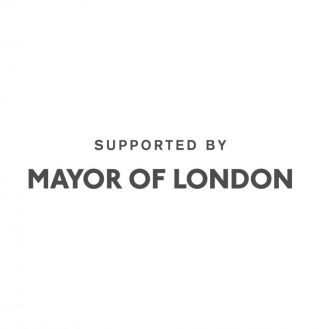New London Architecture
London's Hidden Hero: Neil Pinder
Thursday 26 November 2020

Neil Pinder is a hero in many ways and for many people - not least the students of the school and a wider community of alumni of the school and of the many programmes he has led on widening diversity and inclusion into architecture, higher education and the built environment professions. His energy and vision have been instrumental to the design and identity of the Observatory Block and our other projects at Graveney.
Quote from nominator, Alex Warnock-Smith, Architect, Urban Projects Bureau
My involvement was to show the students how real things happen – we didn’t have to take them to a building site, they were already on one. During the construction of the building, I used to take my students up to the top of the food technology block which overlooks the site to take pictures and the kids were enthused!
I love talking about STEAM (Science, Technology, English, Art, Maths) subjects and this project encompasses all of them. It was a phenomenal time to be teaching and for the kids to be learning and experiencing architecture in 3D. To be able to follow the project from drawing to construction really connected the students to the project.
They saw the cranes building with elements like Lego – with every single piece numbered. We were there one week when the floor came in – so they saw it as a real-life construction. We also did a flow diagrams to show how the whole thing worked in stages and went into the building before the windows and doors went in so they could see the physical development. It was a real-life apparatus - we would sit on the grass in front of the building and draw/sketch it in isometric perspectives.
They could look at the drawings and models and see how it went from small to big, then small again as they were able to relate the actual structure back to the original drawings.
Diversity, racism and sexism are words that have been put out there as diversionary tactics. Whilst everyone is trying to justify those isms, the power remains, the control remains, and the money remains with those few people.
We can design and bring diversity into the built environment by celebrating the UK’s rich culture and multiculturalism and reflect that in the built environment. What I try to get through to my students is that they have Power and ultimately the Control and Monies to do this.
Related content

19 November 2020
The Observatory Block, Graveney School
Wiinner of the New London Awards 2020 Learning Category. The Observatory Block at Graveney School uses walkways, terraces and different teaching levels to facilitate the teaching of STEAM subjects an...
Watch videoRecent
News
Five minutes with... Michelle May
David Taylor speaks with Michelle May, Executive Director at LLDC, on inclusive growth, a new framework, and the thinkin...
News
Introduction to NZCBS: What it aims to do and when it comes into effect
An exploration of whether the UK Net Zero Carbon Buildings Standard is achievable, highlighting the challenges, opportun...
News
How do British people really feel about new towns?
Nancy MacDonald explores why Britons support new towns in principle but resist them locally, calling for trust, better d...
Stay in touch
Upgrade your plan
Choose the right membership for your business
Small Business Membership

Medium Business Membership














